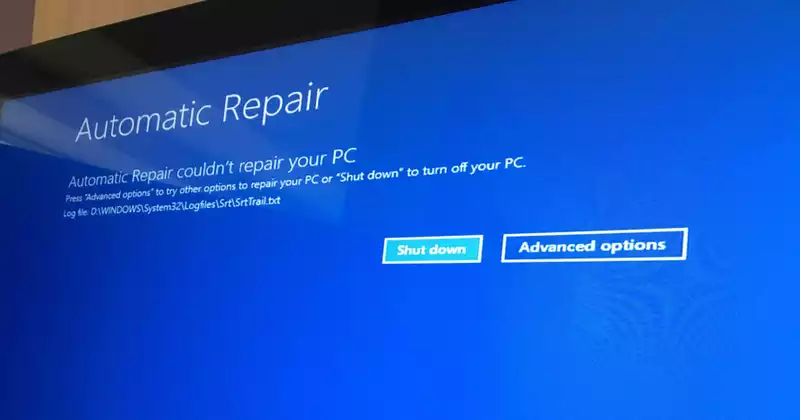Microsoft's latest Patch Tuesday update appears to have put some Windows 10 PCs in a boot loop.
WindowsLatest's eagle eye spotted several threads on Reddit, Microsoft's forums, and other message boards where Windows users are complaining that their PCs went into auto-repair mode after installing the January 12 update.
"This update for the Lenovo T14 AMD caused 'auto-repair' boot loop issues," Reddit user Numitron wrote last week.
"Without a BSOD or any other error, the boot instantly failed and reset. Just boot to recovery environment after last boot failed.""I have failed this update.
"I woke up this morning to my laptop running in auto repair mode.
"I went to the advanced options to make sure I go to a restore point and the latest one was ~12:30AM this morning for Windows Update. However, I was told that the disk was corrupted and could not be restored," KnightTime71 added. 'Looks like Windows Update has FUBAR'd my laptop. [This is not mere speculation. It happened the other day on one of our own Windows laptops, a 2018 Dell Latitude 5490 running Windows 10 version 20H2.
As the story goes, we caused a usually harmless Blue Screen of Death (BSOD) crash by typing a specific file path in the browser address bar. (Yes, we should have done this in a virtual machine.)
The Dell laptop rebooted normally, although it had not been turned on for two weeks beforehand. We had a couple more blue screens (research!) ), then left the laptop happily booting; not sure if the January update was installed or not.
Our IT department sent us a message that we needed to reboot the laptop again as required by our corporate antivirus software. We did so, but the machine has been stuck in auto repair mode ever since.
None of the usual quick repair options, such as booting from the Windows installation USB drive or using Safe Mode, worked. I am having a bit of trouble.
It is possible that the BSOD error I was playing with earlier is the real cause of my distress, but this new problem makes more sense. (We finally spun up the VM to test the BSOD error, but could not reproduce the auto-repair issue.)
We have learned that Microsoft is aware of this issue and will provide updates to affected devices as soon as possible.
Meanwhile, Reddit user Numitron was able to resolve the issue by running the DISM (Deployment Image Servicing and Management) tool and manually rolling back the January update using the following command stating:
dism /Image:C: /Cleanup-Image /RevertPendingActions
However, other users have said that this did not work; Numitron says that in such cases he first tried the "sfc / scannow" command, and recommends trying the "sfc / scannow" command.
It won't work until you convince the IT tech to give you the password for the admin account.
As mentioned above, we could not do much on our machine because of the lack of admin credentials. We took it to the IT department, where the technician, Ileana, first tried "sfc /scannow" on the machine, but got nothing.
She was able to access a restore point of the system from a few weeks ago. From that point to the present, we had barely used the machine, so erasing the previous two weeks wouldn't be much of a loss. So Iliana rolled back to that point and all was well.
However, system rollback should be used as a last resort if you have created or retrieved valuable data after the latest accessible restore point. It may be worth trying the DISM command above first.










Comments